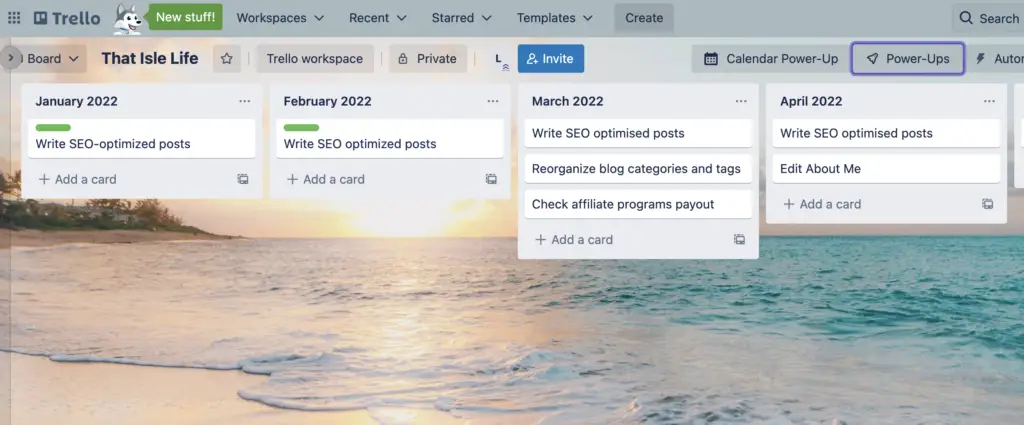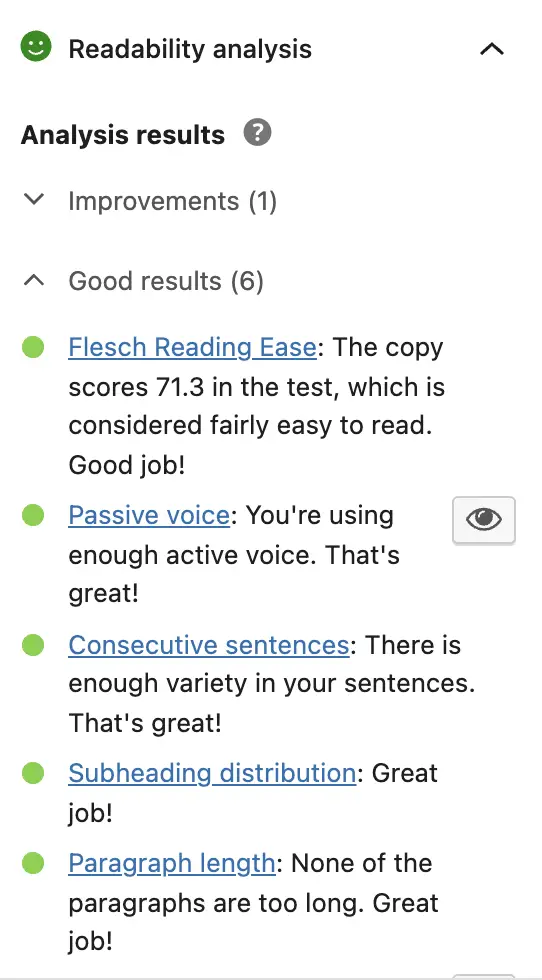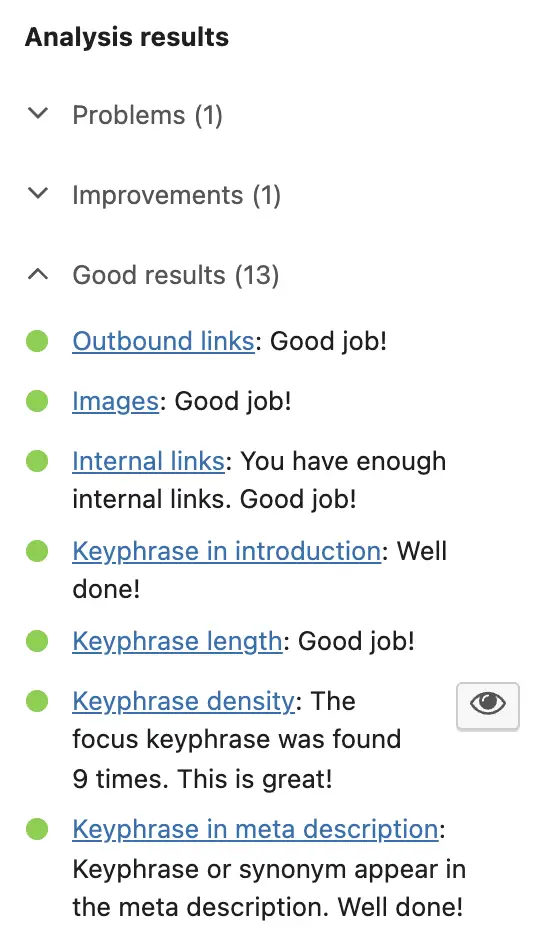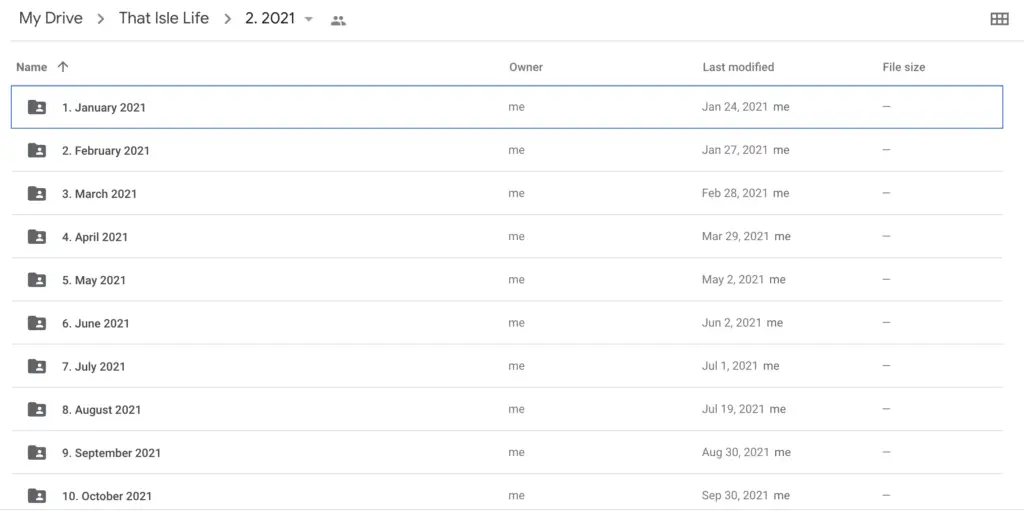Want to organize your blog but not sure how? Read on to discover how to organize a blog to make your blogging life more productive!
It’s been a year and a half since I started taking blogging seriously. One of the things I realized after making blogging my full-time career is that it is HARD WORK.
I’ve also made a ton of mistakes and learned so much along the way. One of the biggest things I’ve learned is that if you want to succeed in blogging, you HAVE to treat it like a real business.
Writing blog posts is only one part of blogging. There are so many other things to think about like SEO! Affiliate Marketing! Email marketing!
These may sound obvious, but there is one IMPORTANT aspect that people rarely talk about in the blogging world…
And that is how to organize a blog.
Learning how to organize a blog is key to a productive blogging life! Imagine writing 1,000 posts a year without a template, a posting checklist, and an editorial calendar. You’ll be so overwhelmed trying to do everything!
Additionally, as your content grows, you will accumulate a ton of digital assets from photos to affiliate links.
If these are not organized from the start, you will be wasting a lot of time searching for things.
Learning how to organize a blog is life-changing because it saved me so much time! Plus, I don’t stress over the little things anymore because I know where everything is.
Trust me, organizing your blog will help your blogging life run much more smoothly! Read on to discover how to organize your ideas, your blog posts, and your digital assets.
Related:
- 10 Blogging Mistakes For Beginners You Need To Avoid (Plus Real Life Examples!)
- 20 Best Blogging Tools For Beginners (Tried and Tested!)

*Disclosure: This post may contain affiliate links that are at no additional cost to you, and I may earn a small commission if you purchase any products via my links. I only recommend products that I would use myself, and all opinions expressed here are my own. Read the full privacy policy here.
Organize your ideas
Plan for the month
When I first started blogging, I didn’t have a plan. All I knew was that I wanted to do it all.
I wanted to write posts, take photos, promote everything on social media, include affiliate links, design my pins, etc!
I did everything on my own for the first six months. Not only was I seriously getting overwhelmed, but I wasn’t getting the results I wanted.
That’s because I lacked focus!
Now, the first thing I do is to focus on 1 to 2 key goals a month. My goal for the first six months this year is to write SEO-optimised posts. That’s it.
However, your goals don’t have to look exactly like mine! You can focus on:
- Designing and posting pins on Pinterest to drive traffic to your blog
- Adding affiliate links to your top-viewed posts
- Working on projects that are relevant to the blog

I use Trello to keep track of my goals. I have a card for each year of the month and I list 1 to 2 goals for each month.
If I find myself getting sidetracked, all I have to do is to return to my Trello and look at my goals.
Brainstorm wisely
In my early days of blogging, I didn’t care about my audience and only wrote about things I was interested in. It’s no surprise that my blog barely got any views!
Rule #1 of making money online: Write for your reader. Write about things they care about.
These days, I only write about things my readers are passionate about. I use a tool called KeySearch to help me to discover what those topics are.
KeySearch is amazing because it shows me which keywords have the most search volume AND the lowest competition. Doing this helps me increase my organic traffic too!
Want to grow your organic traffic? This course helped some of my blog posts to rank #1 on Google – beating renowned home decor sites like Architectural Digest!
Write it down
Got plenty of ideas? Don’t leave them in your head or you’ll forget!
Write everything down either manually or digitally. I prefer using an Excel spreadsheet or Google sheet for this because it’s more efficient.

My Excel spreadsheet is so simple and easy to replicate. It only has six columns: keywords, related keywords, volume, competition, category, and comments.
Once I have my keywords from KeySearch, I fill in the first 4 columns. Then, I categorize each keyword based on my existing blog categories and insert any comments if I have any.
After I’ve written a blog post with a particular keyword, I color code that line so I know I’ve used those keywords.
Organize your blog post
Use a blogging template
One of the easiest ways to put a blog post together quickly is to use a template. Here’s one that I use for all my posts:
- Headline
- Introduction – Give a brief explanation to the topic and share what you’re going to cover
- Related posts – Include a list of posts that are similar to the one you’re writing
- Pinterest photo – Add a photo your audience can pin to Pinterest
- Headings and body paragraphs – This is where the bulk of your content goes. Use clear headings and write short paragraphs. Don’t forget to add photos whenever relevant.
- Conclusion – Sum up your article in 1 to 2 lines. Add an action item (e.g. Like this post? Don’t forget to pin it on Pinterest!) or ask a question to encourage your readers to engage with you!
Use a blogging checklist
A blogging template is great for writing posts. However, once you’re done, you should use a blogging checklist to check that you have everything you need before you click publish.
There are many blogging checklists online, but I only need one and that’s the Yoast SEO plugin on WordPress.
This plugin comes with two checklists: the readability analysis and the SEO analysis checklist.


Both are super helpful and they automatically turn green once you’ve included them in your post.
Plus, both lists are easy to refer to because they’re located on the right side of the page as you’re writing a post. You don’t have to switch tabs or browsers!
Start an editorial calendar & weekly schedule
Last but not least, you can organize your blog posts by starting a weekly schedule and an editorial calendar.
You don’t have to blog every single day if you can’t. I certainly don’t!
What you can try to do though is to be consistent with your blogging by posting on the same days. This lets your audience know when you have new blog posts.
I try my best to post every Tuesday and Friday.
Meanwhile, an editorial calendar ensures you have a different post for your weekly blogging schedule. It’s a snapshot of what you have done and what you have planned for the future.
Again, you can do this manually or digitally. Remember my brainstorming spreadsheet? Well, my editorial calendar is on the same sheet but a different tab. That way, I can easily access both information at a go.

My editorial calendar is very straightforward. It has 6 columns: date, the keyword(s) used, blog title, category, status (Pending/In Progress/Completed), and a notes section.
My blog is extremely organized because I can’t live without my editorial calendar!
Organize your digital assets
A filing system
Finally, it’s time to organize your digital assets by creating a filing system.
I highly recommend using a digital/cloud filing system so that you won’t lose access to important blog posts and pictures. I love using Google Drive – I’ve used it for years and find it super user-friendly.
This is what my filing system looks like:
- A main folder for my blog
- Within that main folder, I have different folders for different years
- 2020
- 2021
- 2022
- Within each year folder, I have 12 different folders for 12 months in a year
- January ’22
- February ’22
- March ’22, etc.
- Within each month, I have a folder for each blog post I’ve written that month. That folder contains:
- Blog post (in Word doc format)
- Photos I took for the blog post (png format)
- Photos I edited and used in the actual blog post (jpeg format)
- Pinterest pins I designed to promote the blog post (png format)

Having a systematic and organized filing system means I know exactly where everything is. It only takes me a few seconds to find what I need!
I hope you’ve learned a thing or two about how to organize a blog! Remember, what matters most is that you have an organization system that works for you and your blog so that you can continue to grow your blog into a valuable website for your audience.

